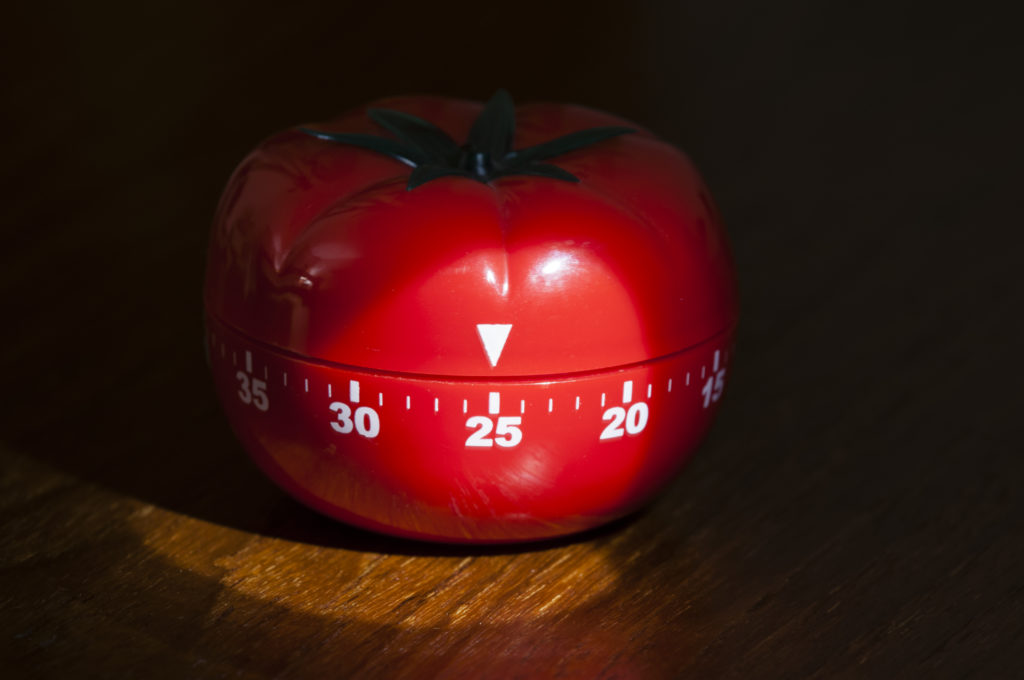We’re already over halfway through our series on JohnHart’s 12 Skills for Exponential Growth in Real Estate! So, with Skill #7, it’s time to go deep. Deep focus, deep determination… deep results. Our CEO, founder, and principal broker Harout Keuroghlian is a proud proponent of a concept called “deep work.” Popularized by author and computer science professor Cal Newport, deep work promotes intensely focused concentration on a single task. The result? A mind operating at its optimum potential. Let’s take a closer look at how you can make deep work second nature by adhering to monotasking and using methods like the Pomodoro Technique.
Shallow Work vs. Deep Work

You may be asking yourself, “Why should I switch up my working style now?’ We get it. It’s gotten you this far. Why fix what isn’t broken? It may not be broken, but it still could be better.
Before we dive into the deep end of the pool, let’s take a look at deep work’s evil twin: shallow work. You might know shallow work from some of its other colorful names: “busy work”, “drone work”, you get the picture.
Shallow work doesn’t demand much thought or command much attention. You could do it in your sleep. Sometimes it’s nice to simply veg out with a bit of shallow work. But Newport proposes that spending too much of your time performing shallow work tasks can permanently harm your ability to complete deep work.

By comparison, deep work asks a lot of you. It also gives a lot back. Deep work presents the immensely valuable key to learning difficult skills quickly.
But to do so, you need to completely eliminate distractions. This means ignoring texts, social media, even other responsibilities. Not forever, of course. Just until you’ve completed the allotted time you’ve agreed to devote to the skill or challenge.
This is easier for some people than for others. But as Newport says in his book Deep Work, “Human beings, it seems, are at their best when immersed deeply in something challenging.”
The Steep Price of Distraction

Minor distractions may not seem like a big deal. Who cares if you take a second to reply to an email? Or answer a question? Or check your Instagram? Chances are good that you’re underestimating the demand of distractions.
But even if you’re a master at budgeting the time you spend on distractions, every interruption to deep work carries a heavy hidden fee: the time needed to refocus your attention. Even if you leap right back into your deep work, your mind can linger on that vacated distraction for up to 20 minutes! That’s 20 minutes of your mind not working at its full potential. And you need every maxed-out minute to learn challenging new skills.
Most experts agree that systems are integral for developing solid deep work practices. This means finding the ritual or routine best suited to helping you quickly transition into a distraction-free state of focus.

There are a slew of methods out there designed to help you with what Newport calls “deliberate practice.” We’re going to look at one of Harout’s favorites at the end of this blog, but feel free to hunt for the system that best suits your personal style.
Single Focus = Singular Results
JohnHart’s staff and agents alike can tell you how highly Harout values monotasking. As you can guess, monotasking is the opposite of multi-tasking. It involves deliberate, unwavering focus on a single task. With deep work, the focal task is challenging and complex. But monotasking can be just as easily applied to simple tasks as well.
Monotasking bypasses the mental whiplash we experience when switching from task to task, opting instead for clinical focus. But how much of a difference does that really make? According to the American Psychological Association, 40% difference. That’s right, multi-tasking is, on average, 40% more time-consuming than monotasking. Starting to see why Harout likes it so much?
Practicing Deep Work Fundamentals with the Pomodoro Technique

Some of us may have the willpower to dive right into monotasking. But most of us won’t take to it so quickly. Especially those of us used to a life of multitasking. So, how can we effectively transition into regular deep work practice? One of Harout’s favorite methods is the popular Pomodoro Technique.
Developed by university student Francesco Cirillo, the Pomodoro Technique rewards bursts of focused work with incremental breaks. This is meant to keep energy high and a strong forward momentum while producing optimal results.
So, what is a pomodoro? Those who speak Italian will recognize it means “tomato”. But what could tomatoes possibly have to do with effective time management and deep work?
It turns out that while developing this technique, Cirillo used a tomato-shaped kitchen timer to help him time his sessions. He began to refer to a 25 minute deep work session plus the following five minute break as one “pomodoro.”

Using the Pomodoro Technique can help in a similar way to timeboxing, the first JohnHart Skill for Exponential Growth in Real Estate. By measuring out your day in “pomodoros”, you can have an accurate map of your work schedule without running out of steam.
The types of people who stand the most to gain from employing the Pomodoro Technique include:
- Workaholics who consistently blow past the point of quality.
- Those easily distracted by outside influences.
- Professionals with an interminable work load.
- Those who regularly overestimate their own ability.
How to Apply the Pomodoro Technique in Your Daily Life
The Pomodoro Technique finds strength in its straightforward simplicity. Just follow these five basic steps:
- Choose your task or focus.
- Set your timer for 25 minutes.
- Use deep work principles to focus on your task without distraction.
- When the 25 minutes conclude, take a five minute break.
- After four “pomodoros”, take a 15 to 30 minute break.
Remember, a pomodoro increment accounts for the 25 minutes of work plus the subsequent five minute break.

Of course, not all of your tasks will fit neatly into a pomodoro. So, what happens if you have a task that you know is going to last longer than a pomodoro? You break it up. This is especially the case for projects that span four or more pomodoros. In cases like this, you need to evaluate how to break your project down into manageable, actionable steps.
Pomodoro Technique FAQs
What if you have tasks that don’t take up a whole pomodoro? Smaller tasks should be combined together to best fit into a pomodoro. Therefore, multiple tasks can be packed into a single pomodoro as long as they don’t exceed the 25 minute limit.
Finally, since this is all about deep work, make sure that your pomodoros remain uninterrupted. Put your phone away, stay off social media, and stop checking your emails. Unless, of course, they are part of your regimented pomodoro tasks. But deep work won’t work without deep focus. So, stay committed!

Inevitably, emergencies happen. There will be disruptions that just can’t be postponed. Try to make these a rarity. But when they do happen, simply take your five minute break, no matter where you are in a pomodoro, and then restart the cycle once the disruption is adequately addressed.
Commit to Deep Work Today
There are plenty of other roads you can take to get to consistent deep work practice. But to succeed in the modern real estate industry, you need every advantage you can muster. In this way, deep work is essential. Find the method that works for you today to enjoy a more productive tomorrow!


